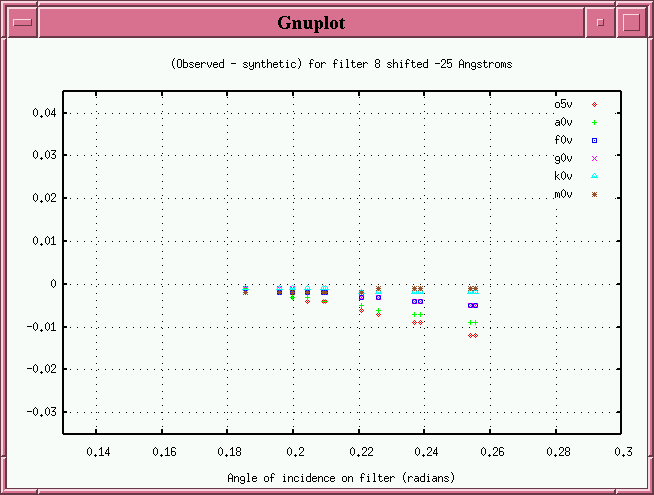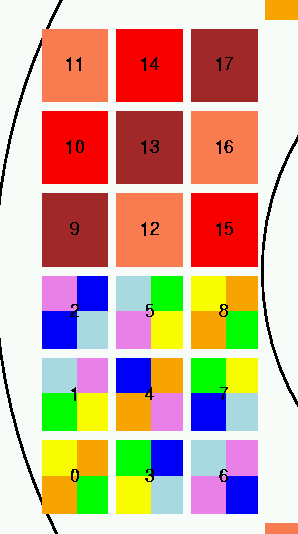

The idea is to place stars of a range of spectral types in every filter and chip. Specifically,
I have created an artificial catalog of stars near (RA = 0, Dec = 0) which fall on this quadrant:
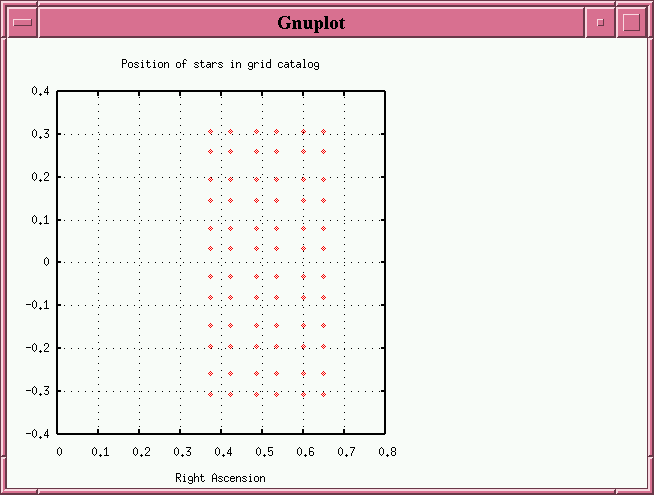
The catalog is very artificial: dwarf stars of spectral type O5, B5, A0, A5, F0, F5, G0, G5, K0, K5, M0, M5 all sit at the same RA and Dec, on top of each other. For the current testing purposes, this is fine; but when the simulator is improved to take realistic "CCD images", the stars will have to be moved so that they are some distance away from each other.
The filter passbands are shifted slightly if light enters the filter at an angle. How large is this effect, and how does it depend on spectral type? I assumed that all filters in a given passband were manufactured to be identical, and designed to have the fiducial transmission curves near the middle of the annulus. I computed the following quantities:
Below, I show this delta as a function of angle of incidence on the filter, for one filter at a time.
Filter 0 of 9: "B"-like
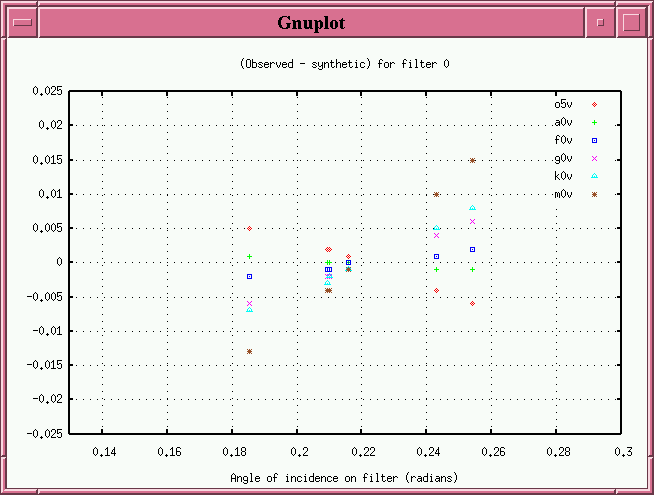
Filter 3 of 9: "I"-like
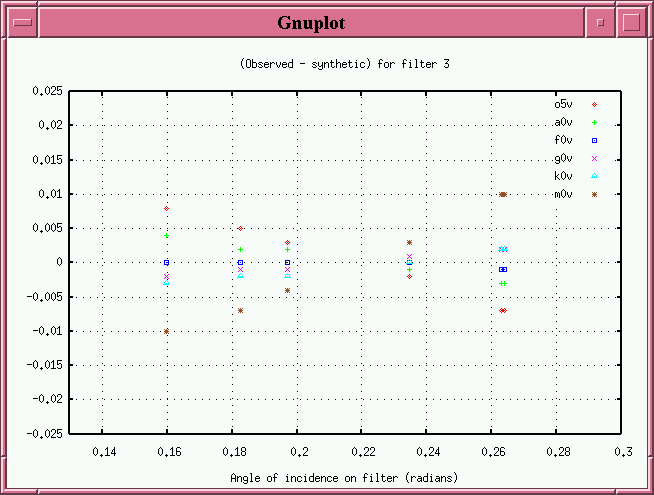
Filter 6 of 9: "near IR"
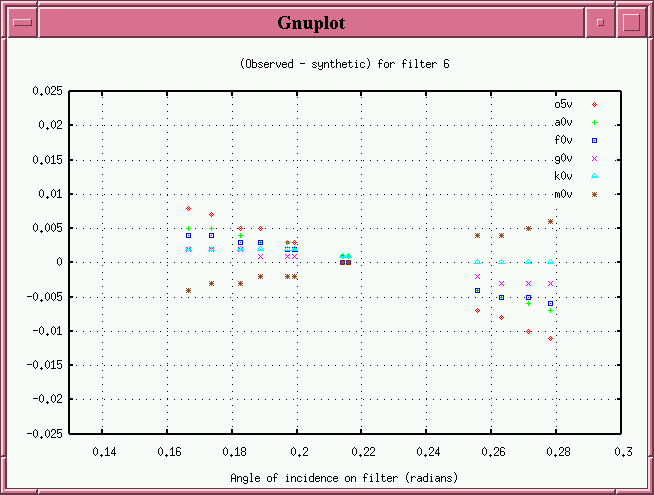
Filter 8 of 9: "far IR"
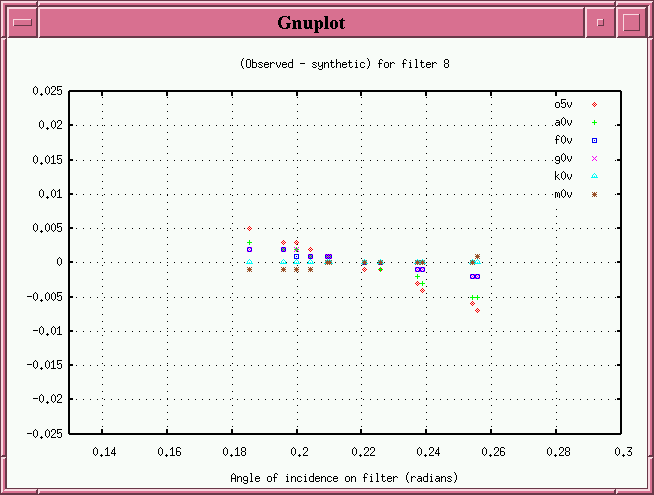
Notes:
What if filters shift slightly after launch, so that the actual wavelengths are not equal to the design wavelengths, and we are not aware of this shift?
Below is a graph showing the errors in photometry, again in form delta = (observed - synthetic), for filters which have been shifted by +25 Angstroms.

Now, for filters which have been shifted by -25 Angstroms.
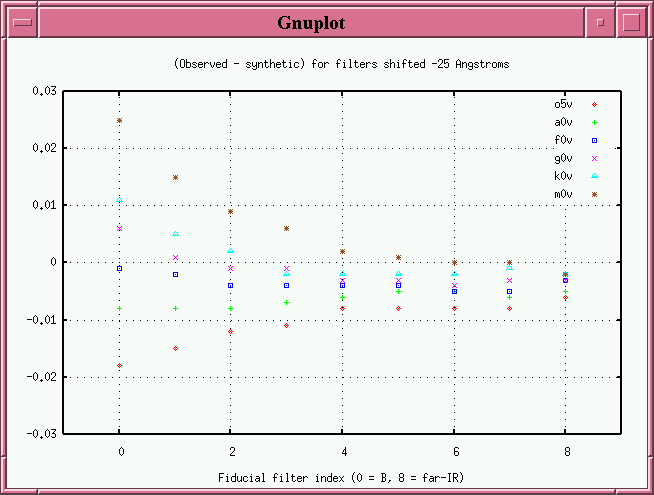
Notes:
So, suppose that we now simulate a combination of effects:
Once again, I plot delta as a function of angle of incidence on the filter, for one filter at a time.
Filter 0 of 9: "B"-like
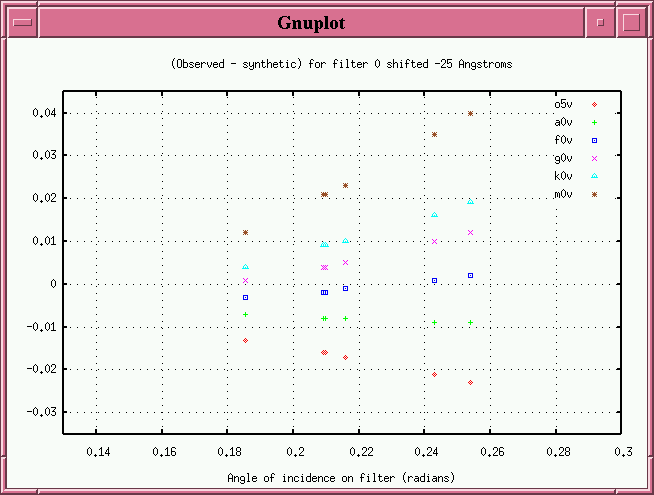
Filter 3 of 9: "I"-like
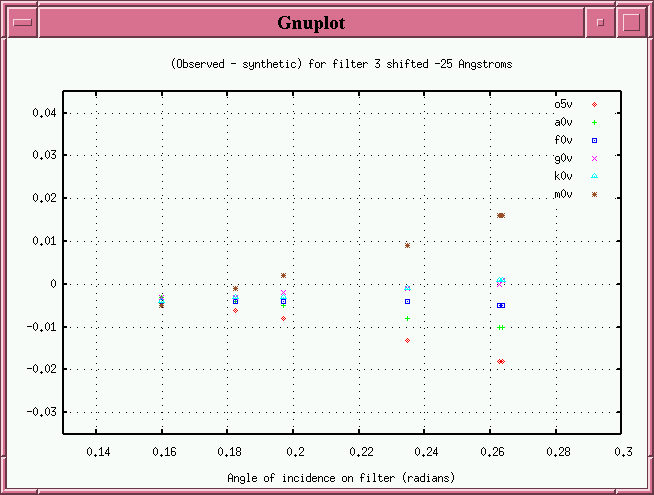
Filter 6 of 9: "near IR"
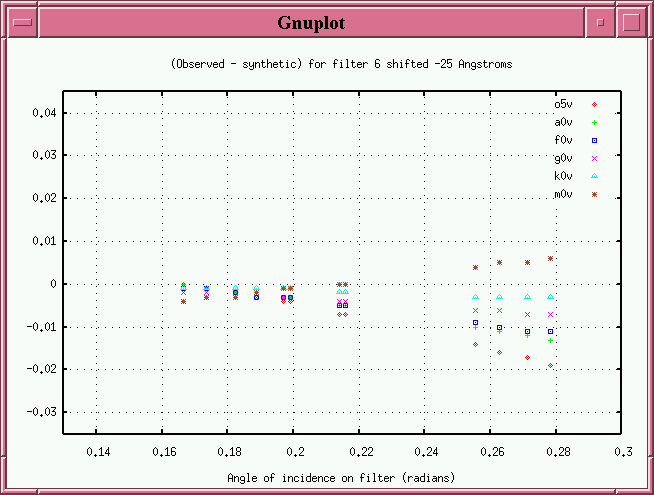
Filter 8 of 9: "far IR"
